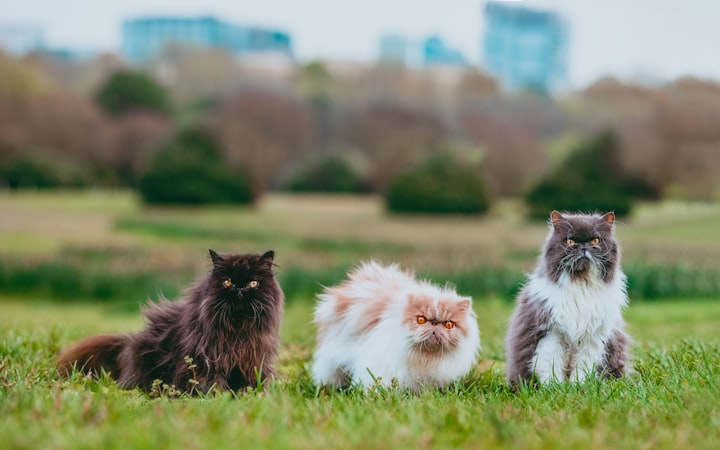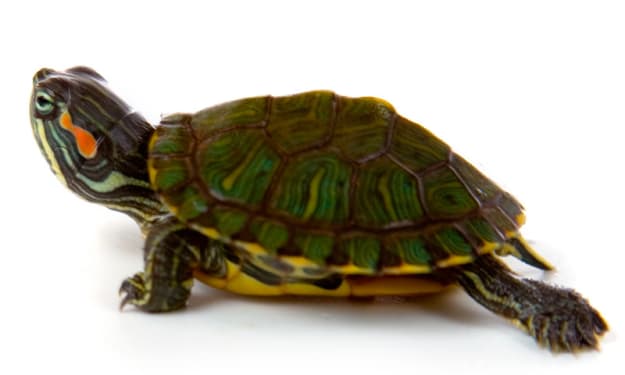How to balance the relationship between each cat in a multi-cat household?
Are cats in multi-cat households stressed?

Have you noticed that there seems to be magic in having a cat, that is, after having the first one, you want to have the second one, and then more and more ......
Here comes the question! In a multi-cat household, what can the popper cooper do to balance the relationship between each meow? Is it true that cats in a multi-cat household are more stressed than in a single-cat household?
Let's take a look at the indicators that judge the happiness of a multi-cat family!
Happy multi-cat families are always similar
How can we judge whether a multi-cat family is harmonious and happy? That is, both people and cats living in the household do not feel stressed or have health problems. Specifically.
A happy multi-cat household
✔ Frequent friendly behaviors between cats, such as licking each other's fur, sleeping together, and playing.
✔ No hostile behavior between cats, such as harassing and erecting fur, chasing and fighting (scratching, pounding, giving hard mouths), obstructing each other from eating or using the litter box, etc.
✔ Each cat has a certain amount of private cat space and a place to go when it wants to be alone.
✔ Sufficient resources, no competition.

Having an extra cat not only means double the daily expenses, medical costs. The most important thing is to take care of the feelings of each cat in a multi-cat household. Otherwise, what awaits you afterward may not only be a messed up home but more seriously, a cat with physical and mental health problems.
Unfortunate multi-cat families have their misfortunes
There are many behavioral and health problems that can occur in a multi-cat household, some of the more common ones are
Diseases caused by stress. Examples are idiopathic cystitis, obsessive-compulsive disorder (excessive hair licking), obesity and diabetes, loss of appetite and fatty liver, nervous diarrhea and vomiting, cat nasal branch, etc.
Infectious diseases. People and cats living in the same dense space and between cats and cats are prone to cross-infection. There are various types of pathogens, such as viruses (cup virus, feline AIDS, leukemia, herpes virus), bacteria, fungi, internal and external parasites, etc.
It is even more important for multi-cat households to keep up with vaccinations
Fighting. Cats may fight because of illness, pain, competition for resources, lack of socialization, etc.
Diet issues. Each cat has a different personality and appetite. In a multi-cat household, it is easy for some cats to overeat, resulting in obesity; others are malnourished because they cannot grab food. And, cats can easily become overly aggressive in this environment of competing resources.
Breeding problem. If there are male and female cats at home, and they are not DE-sexed, they are likely to mate during the breeding season, and what awaits you is a vicious cycle of litter after litter of kittens that cannot be raised and sent out.
How to solve these problems
Choose cats that are easier to get along with
✔ Mother cat and her kids.
✔ Siblings.
✔ Kittens that are not related, but spend the "socialization" period together at 2-7 weeks of age.
✔ Two DE-sexed male cats.
✔ Two UN-neutered female cats (but females are prone to many behavioral problems during heat).
✔ One DE-sexed male cat and one DE-sexed female cat.
Making a good impression at the first meeting
A survey conducted by a Cornell University research team illustrates that cats who do not make a good impression on each other when they meet for the first time, this is likely to lead to lasting hostility and increase the frequency of fights.
Therefore, it is never advisable to let the aboriginal and new cats meet directly without any preparation. But the good thing is that if they live together for a longer time, the fights will be less frequent.
Plenty of material resources
With so many owners, it's important to share the wealth!
Mowers are not as jealous as you might think, and the more resourceful the environment, the more peaceful the mowers can co-exist - at least that's how it seems on the surface. These resources include.
● Adequacy and variety of food
● Number of litter boxes (n+1 recommended)
● Size of the room and number of rooms
● Number of amenities available for the cat in the room
Of great importance is the issue of space allocation.
Each cat should have a certain separate area for activities and separate their food bowls, litter boxes, litter, and other personal cat items.
Try to increase the vertical height of the space. The high point provides a sense of security for cats to inspect the surroundings and avoid harassment from other cats, and also relieves the pressure of too little space in the room.
Let cats have their secret base, such as in cardboard boxes and cabinets, where they can hide and secretly observe and keep track of other cats' movements.
In short, let cats make their own choices as much as possible and decide where they want to place their litter box, where they want to eat, and where they want to hide so that they can feel most comfortable and secure.
About space arrangement, you also need to know.
Cats with different temperaments are better off not living in the same room.
For timid cats, it is best to put food and litter boxes in their separate hiding places so that they can eat and defecate without fear.
Do not eat side by side close together. This can easily cause a sense of urgency in cats, resulting in loss of appetite or eating too quickly, which can lead to food reflex and damage to the digestive system. It is also easy for a good competition to occur, which is likely to end up in bullying and fighting.
According to several studies done by foreign universities on multi-cat households, the multi-cat environment itself may not be stressful for cats. Instead, cats in multi-cat households experience more stress from people.
For example, spraying too much perfume or deodorant in the home, smoking in the house, making a lot of noise, etc.
In addition, it is best for the popper cooper to record and take care of each cat's preferences, and to rain on the parade in terms of daily interactions and behavioral performance~

DE-sexing for peace of mind
Families with many cats must be DE-sexed!
Only when DE-sexed, there will be no male cats always urinating or even saber-rattling, no female cats in heat and howling all night, and most importantly, no one will have two, two will have three, and the offspring will be endless ...... Causes animal hoarding disorder, dragging down the popper cooper, and also reduces the quality of life of existing cats.
As you can see, a multi-cat family that wants to be happy and long-lasting requires a certain amount of money, effort, and time on the part of the popper cooper. So, it must also be done without the popper cooper feeling the financial and psychological burden.
In the end, it's better to work hard to earn money to give your cat a good living environment!!!
About the Creator
Diane Dora
man may lead a horse to the water, but he cannot make it drink.






Comments
There are no comments for this story
Be the first to respond and start the conversation.